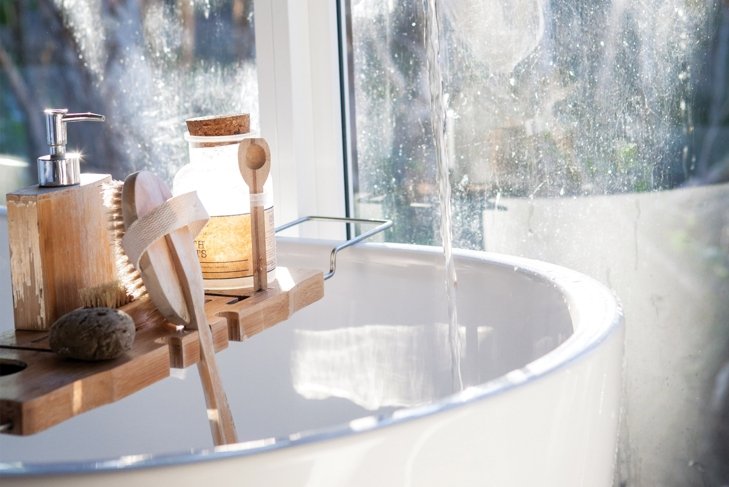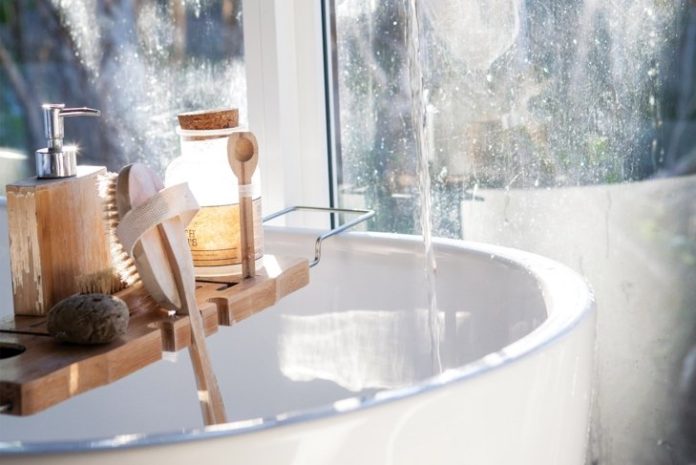
What does water have to do with skin? A ton. Your skin is full of water—30 percent water, in fact—and keeping it there can help make your complexion healthy and happy.
Water content is a major factor in your skin’s plumpness, elasticity, and resilience to the elements. Studies have found that decreased skin hydration is linked to greater depth and quantity of wrinkles. (Noooooo!)
The good news is that by learning how to boost your skin hydration levels and lock in moisture, you can improve the look and feel of your skin, and you may even be able to decrease signs of aging, including wrinkles.
Any questions?
01
How do I know if my skin is dehydrated?
It’s quite easy to tell when your skin is in need of some TLC. Dehydrated skin if often dry, itchy, flaky, scaly, and uneven in colour and complexion. There’s even a simple test to check if your skin is in need of serious hydration. Give your arm or cheek a small pinch. If your skin wrinkles, or immediately doesn’t smooth over, your skin may be dehydrated.
02
Do I just need to guzzle more water?
Hydration is essential, no doubt. Research shows that if we are chronically dehydrated, drinking sufficient water boost skin thickness and density, but overhydrating is neither necessary nor beneficial. Plus, adequate hydration isn’t enough to help prevent signs of skin aging, like wrinkles.
03
How do I know if I’m drinking enough water?
An easy way is to ensure your urine is pale yellow or colorless. You may be consuming more water than you realize, especially if you follow a plant-based diet.
04
Okay … what does help preserve water in my skin, then?
It all starts with the first step of your skincare routine: cleansing. It may sound strange, but your natural oil (sebum) helps keep your skin moisturized.
That’s why over-scrubbing your skin or using harsh cleansers dries you out. By destroying your skin’s natural “waterproofing” oil layer, you allow much-needed moisture to escape. The solution? Use a gentle facial cleanser without alcohol, sulfates or artificial fragrances.
05
What kind of moisturizer should I use?
Moisturizing properly is equally important. Here are some ingredients that can help trap moisture in the skin.
Occlusives are also known as “barriers” that work to waterproof the skin. Occlusives include a number of different waxes. Vegan options include candelilla wax and carnauba wax.
Humectants are ingredients that attract water to the skin, including vegetable glycerin or hyaluronic acid (which has been shown to increase skin hydration and decrease the depth of wrinkles).
Emollients don’t technically help hold water in the skin, but they do help smooth skin and can be very valuable in a moisturizer. Examples include many natural plant oils and butters, like shea and cocoa butter.
Using a humectant without an occlusive can sometimes lead to water loss in the skin, so make sure your moisturizer contains both types of ingredients. Thankfully, many excellent moisturizers that contain all three ingredient types are stocked at natural health retailers.
06
Should I look for water as an ingredient in my skincare products?
Although it seems counterintuitive, water itself doesn’t always make the best skincare ingredient. In moisturizers, it means the need for preservatives (natural or synthetic) and limits room for active ingredients like those described above.
On its own, water applied topically can even be drying, pulling moisture from the skin as it evaporates. That’s why it’s so important to apply moisturizer after showering or bathing.
07
What about facial mists?
On the other hand, facial mists can be moisturizing, provided they have the right ingredients and are used correctly. Beauty experts and bloggers alike attest to their numerous functions, like setting makeup, helping to tone skin, refreshing and cooling skin throughout the day and priming skin for makeup application.
Mists that contain ingredients like natural plant extracts, vitamins, emollients, and humectants are formulated to be used without blotting, while pure thermal or mineral waters are meant to be patted off after a few minutes. Whichever you choose, make sure it’s free from artificial fragrance, alcohol and parabens, and select one formulated for your skin type.
08
Which foods are the most hydrating?
Many foods—fruits and veggies, in particular—contain plenty of water. While drinking several glasses of water a day to meet your hydration needs is the first step to healthy skin, incorporating these water-rich foods into your diet can do wonders.
Fruit is a natural go-to for healthy hydration, but specifically, try out watermelon, strawberries, peaches, and coconut water.
Vegetables like celery, cucumber, bell peppers, and lettuce are all salad staples, as well as containing plenty of water and nutritious fibre.
Chicken and vegetable broth are mostly water, make a great lunch, and are low in calories.
09
When do I need more water?
Drink an extra 1.5 to 2.5 cups (400 to 600 mL) of water when exercising for less than an hour. Increase water intake when exercising for longer periods of time, exercising heavily, or sweating profusely.
Hot or humid weather and high altitudes over 8,200 feet (2,500 metres) can cause dehydration. Drink extra water to compensate for fluid loss.
Vomiting, diarrhea, fever, bladder infections, and kidney stones cause fluid loss. In extreme cases oral rehydration solutions may be taken to restore fluids.
10
Anything else I should know about water and skin?
Not all water is created equal when it comes to skincare. Most importantly, make sure it’s not too hot. Water that’s too hot disrupts your lovely natural oil layer, letting precious water escape.
Hard water has also been linked to skin disorders like dermatitis. Some people who live in locations with hard water and suffer from skin disorders choose to invest in a water softening system. Others swear by shower filters, saying that showering in filtered water helps their complexions.













